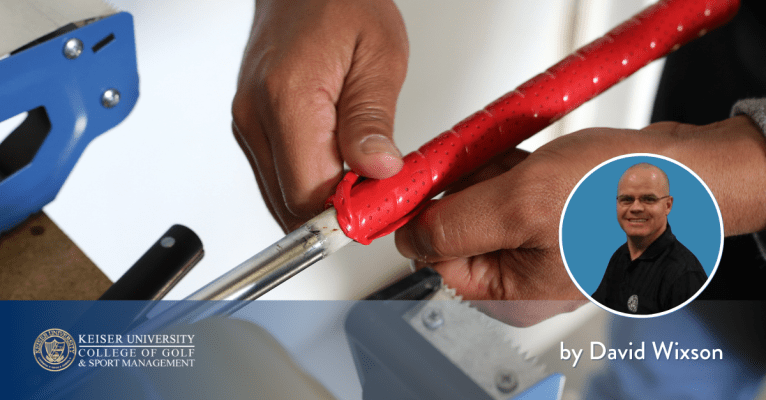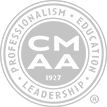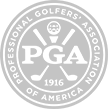Custom Club Fitting – The Pros and Cons

By David Wixson, Keiser University College of Golf Professor and PGA Master Professional
A Golf Club Fitting & Repair course is required to complete the Professional Golf Management program at Keiser University’s College of Golf. Students are exposed to all aspects of golf club fitting and learn to perform basic golf club repairs. The fundamental question for golfers pertaining to club fitting is, What are the tangible benefits, and are there any disadvantages?’
The Pros and Cons of Golf Club Custom Fitting
Golf club fitting is the process of customizing golf clubs to match a player’s unique swing characteristics, body type, and skill level. By analyzing factors like swing speed, ball flight, and grip preferences, professional fitters tailor clubs to optimize performance. While club fitting has gained popularity among golfers seeking to improve their game, it has advantages and drawbacks. This article explores the pros and cons of golf club fitting to help you decide if it’s worth the investment.
Pros of Golf Club Fitting
Improved Performance
Custom-fitted clubs are designed to complement your swing mechanics, leading to better accuracy, distance, and consistency. For example, a properly fitted driver can correct a slice or hook, while fitted irons can improve shot dispersion. Data from fitting sessions often shows measurable improvements, such as tighter shot patterns or increased carry distance.
Personalized Comfort
Fitted clubs are tailored to your physical attributes, such as height, arm length, and grip size. This ensures a more comfortable setup, reducing strain and fatigue during play. A club that feels natural in your hands can boost confidence, which is critical for consistent performance on the course.
Optimized Equipment for Skill Level
Club fitting accounts for your current skill level and playing style. Beginners may benefit from clubs with larger sweet spots and more forgiveness, while advanced players might need clubs designed for control and workability. Fitters can recommend specifications like shaft flex, clubhead design, and loft angles to match your needs.
Correction of Swing Flaws
Fitting can help mitigate swing imperfections. For instance, if you tend to hit the ball too low, a fitter might recommend a driver with a higher loft or a more flexible shaft to increase launch angle. This can lead to immediate improvements without requiring extensive swing changes.
Long-Term Investment
While the upfront cost can be high, fitted clubs are a long-term investment in your game. Properly fitted equipment can remain effective for years, reducing the need for frequent replacements. Additionally, the performance gains can lower scores, potentially saving money on lessons or other aids.
Cons of Golf Club Fitting
High Cost
Club fitting sessions and custom clubs can be expensive. A full bag fitting might cost $100–$400, and custom clubs often carry a premium over off-the-shelf models. For casual golfers or those on a budget, the expense may outweigh the benefits, especially if they don’t play frequently enough to justify the cost.
Time-Intensive Process
A thorough fitting session can take 1–3 hours, depending on how many clubs are fitted. For golfers with limited time, this can be a significant commitment. Additionally, custom clubs may take weeks to build and deliver, delaying their use.
Limited Benefits for Inconsistent Swings
Golfers with inconsistent swings may not see significant improvements from custom fitting. If your swing mechanics vary greatly from shot to shot, the benefits of tailored equipment may be diminished. In such cases, lessons or practice might offer more immediate value.
Overwhelming Options
The fitting process involves choosing from a wide range of shafts, clubheads, grips, and other components. For some golfers, particularly beginners, this level of customization can feel overwhelming or confusing. Without clear guidance, the process may lead to decision fatigue or suboptimal choices.
Potential for Over-Reliance
Some golfers may expect custom-fitted clubs to dramatically transform their game, leading to unrealistic expectations. While fitting can enhance performance, it’s not a substitute for practice or skill development. Over-reliance on equipment can hinder long-term improvement if swing fundamentals are neglected.
Conclusion
Golf club fitting offers significant advantages for players seeking to maximize their potential on the course. Improved performance, personalized comfort, and optimized equipment make it an appealing option for dedicated golfers. However, the high cost, time commitment, and limited benefits for inconsistent swings are important considerations. Ultimately, the decision to pursue club fitting depends on your budget, commitment to the game, and goals as a golfer. For those who play regularly and want to gain a competitive edge, fitting can be a worthwhile investment. Casual players or beginners may benefit more from focusing on lessons or practice before diving into custom equipment.















At 77, I had played with my Callaway Big Bertha set since the mid 90s! This past January I committed to improvement and regular play. I decided to get fitted for a driver and fairway wood. The process was fascinating, ending up with a$1,000 pair of Titleists. The wait time was just a few days. The $100 fitting fee was refunded.
Six months later I returned to my fitter for a set of irons. Taylor Made. No fee this time, again.just a few days.
And this week I went back for a new putter. Ended up with the Spider, ready the following day.
Only positive things to say about the Process: Moon Golf in Melbourne, FL